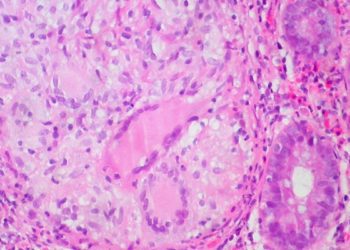Health inequality increasing between socioeconomic classes in teens
1. From 2002 to 2010, health disparity between socioeconomic classes in adolescents increased in all areas except overall life satisfaction.
2. There was an overall increase in physical activity, body mass, self-reported physical symptoms, and life satisfaction in adolescents.
Evidence Rating Level: 2 (Good)
Study Rundown: In the adult population, overall health and well-being is closely tied to socioeconomic class. Furthermore, as the gap between the upper and lower socioeconomic classes continues to widen, it appears that health disparity has increased. Few studies have examined how this trend in socioeconomic status impacts the health in adolescents. In this study, the investigators examined 4 specific health categories in adolescents: physical activity, body weight, psychological and physical symptoms, and life satisfaction. Their hypothesis was that the health trends in adolescents would mirror those of adults; that is, since the economic gap has widened, health disparity between socioeconomic classes is predicted to be wider. The study found that from 2002 to 2010, health disparity between socioeconomic classes increased in 3 of the 4 categories. The only category in which health disparity had narrowed was life satisfaction. The investigators also looked at overall health trends, finding an increase in overall physical activity, body mass, physical symptoms, and life satisfaction. The study offers a unique perspective in assessing the impact of socioeconomic status on overall health, and provides valuable information regarding areas of health disparity that need further improvement. A weakness of this study was the use of self-reported height and weight for BMI calculation.
The study was funded by the Canadian Institutes of Health Research.
Click to read the study, published today in The Lancet
Relevant Reading: Adolescence and the social determinants of health
In-Depth [cross-sectional study]: This study investigated the effect of socioeconomic class on various health and well-being outcomes in adolescents. The study included both European and North American countries and the participants included nationally representative samples of 11, 13, and 15 year-old adolescents. To quantify socioeconomic class the study used the HBSC Family Affluence Scale. Physical activity was assessed with one question: “Over the past 7 days, on how many days were you physically active for a total of at least 60 minutes per day?” BMI was measured with self-reported heights and weights. Psychological symptoms included irritability, nervousness, bad temper, feeling low, and poor sleep. Physical symptoms included headache stomachache, backache, and dizziness. For almost all of the nations included in the study, there was a greater than 70% response rate.
The results showed small, but significant increases in the following health outcomes from 2002 to 2010: average physical activity (3.90 to 4.08 days per week of physical activity; p<0.0001), body mass (zBMI –0.08 to 0.03; p<0.0001), physical symptoms (3.06 to –3.20; p<0.0001), and life satisfaction (7.58 to 7.61; p=0.0034). Disparity between socioeconomic groups increased in physical activity (–0.79 to –0.83 days per week difference between most and least affluent groups; p=0·0008), body weight (0.15 to 0.18; p<0.0001), and psychological (0.58 to 0.67; p=0.0360) and physical (0.21 to 0.26; p=0.0018) symptoms. The sole category in which health disparity narrowed was in life satisfaction (–0.98 to –0.95; p=0.0198).
More from this author: Local excision inferior to major resection in T1-2 colon cancer and T2 rectal cancer, Secondary mastoid obliteration improves quality of life for patients with chronic otitis media, Healthcare reform linked with reduced racial disparities in surgical care, VATS lobectomy may be preferred in COPD with non-small-cell lung cancer, One-on-one training leads to improved virtual reality laparoscopic performance
©2015 2 Minute Medicine, Inc. All rights reserved. No works may be reproduced without expressed written consent from 2 Minute Medicine, Inc. No article should be construed as medical advice and is not intended as such by the authors, editors, staff or by 2 Minute Medicine, Inc.







